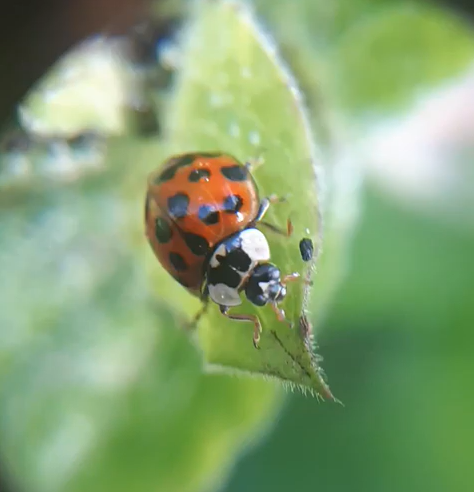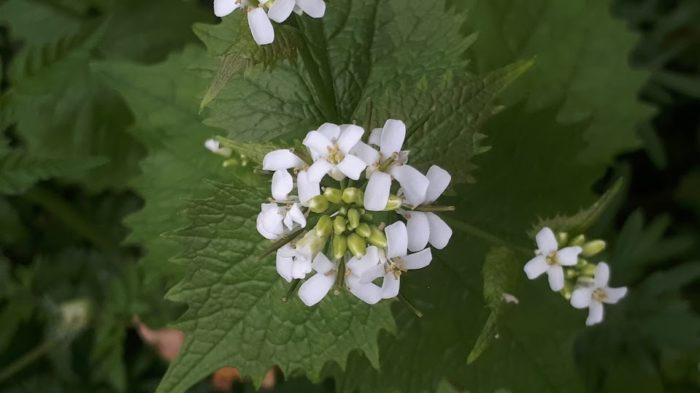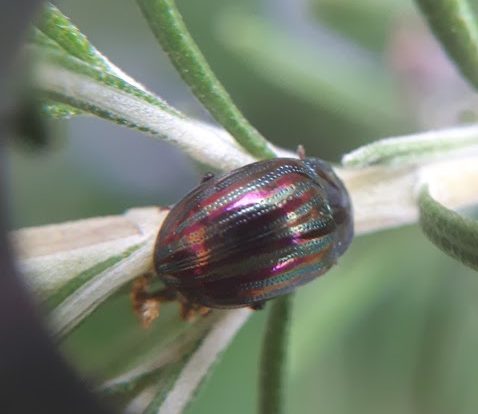Spring in St. George's Fields

Every Friday, biodiversity volunteers have been watching the campus bloom and thrive as spring arrived. St George’s Fields – nestled behind the Henry Price Halls of Residence - is a valuable biodiversity site and is now bustling with life. Here our Student Sustainability Architect Reuben talks about what can be found in St. George’s Fields at this time of the year.
Peeking through the grass across the field there are tiny cup-shaped flowers with violet-striped petals and a light yellow stigma. These are Creeping Speedwell or Veronica filiformis. These plants reproduce asexually using ‘stolons’ or runners (stems that grow just above or under the surface of soil).
If you have ever grown strawberries, you will know how this works: each plant sends out small stems which can spread and grow new shoots. Because a new plant can grow out of even the smallest section of stolon, mowing has spread the flowers throughout St. George’s fields.
There are also a variety of trees to be seen. The magnolia trees have just finished flowering, but apples, plums and cherries are displaying pink and white blossoms. Pollinators love these flowers, and they provide an important source of food for bees and other insects.
Just coming out in the field you can find Red Campion (Silene dioica), which produce lovely pinky-red five petaled flowers from late spring all the way into early autumn.
Not only beautiful, they are also important for various pollinating insects and (if you believe the folklore) even fairies! These native wildflowers can be found on the south side of the field, enjoying the dappled sunlight provided by the trees above.

Red Campion
The plant’s Latin name (Silene dioica) derives from the merry woodland god Silenus, a figure of Greek mythology, and dioica, meaning ‘two houses’. This second part of the name refers to the unusual characteristic of being ‘dioecious’.
Rather than the typical arrangement of having male and female parts in the same flower or on different flowers on the same plant, each Red Campion is ‘unisexual’ and produces only male or only female flowers. This ensures that self fertilisation of the plants does not occur: the pollen that leads to the next crop of seeds has to come from another plant, thereby ensuring genetic diversity.
Red Campion often produces hybrids, for example by crossing with the rarer White Campion (Silene latifolia) to produce Pink Campion (Silene x hampeana) which comes in a variety of light rose shades and can also be found on campus.
For the foragers among us, a bounty of wild garlic can be found carpeting the ground between gravestones on the south west corner of the field. Delicate white flowers can now be seen jumping out of the elliptical leaves which are edible and loved by pollinators.
Lesser known but also edible is garlic mustard, which can be found along the walls by the engineering building. It has heart-shaped jagged leaves, small white flowers and smells of garlic.

Garlic mustard
Along the hedgerows, our volunteers have also found Ribwort Plantain. Unrelated to the banana variety which shares its name, it provides an effective treatment for nettle stings and the flowers of these common plants taste curiously of mushroom.
We have also spotted bluebells in flower, which come in a variety of colours in shaded areas. These bluebells are unfortunately not our native Hyacinthoides non-scripta, but a hybrid with the Spanish variety, H. hispanica.
The resulting plant, H. x massartiana, stands more upright than the native bluebell, and its flowers come in a variety of colours - light blues, pinks and whites. The short period of cross over between the Bluebells and Red Campion will be the height of the field’s spring colour, and not to be missed.
All these flowers provide a great environment for insects, and the birds and small mammals which feed on them. Sparrows, Blue Tits and Robins can all be seen in St George’s Fields, and some even say they have heard a Woodpecker knocking on the trees.
Bees are everywhere, many of which live in the buzzing apiary which can be found on the south east edge of the field. You may also spot beetles, such as the familiar ladybird, as well as butterflies and many other species.

Rosemary beetle
If you would like to be involved in biodiversity monitoring, the sustainability service is recruiting Biodiversity Ambassadors to volunteer with the program. For more information please email biodiversity@leeds.ac.uk
The Sustainable Development Goals
We use the United Nations Sustainable Development Goals (SDGs) as a framework to guide our activity. Our biodiversity work is linked to the following SDGs:
- Goal 3: Good Health and Well-being
- Goal 4: Quality Education
- Goal 11: Sustainable Cities and Communities
- Goal 14: Life Below Water
- Goal 15: Life on Land
Find out more about our impact on the SDGs.
